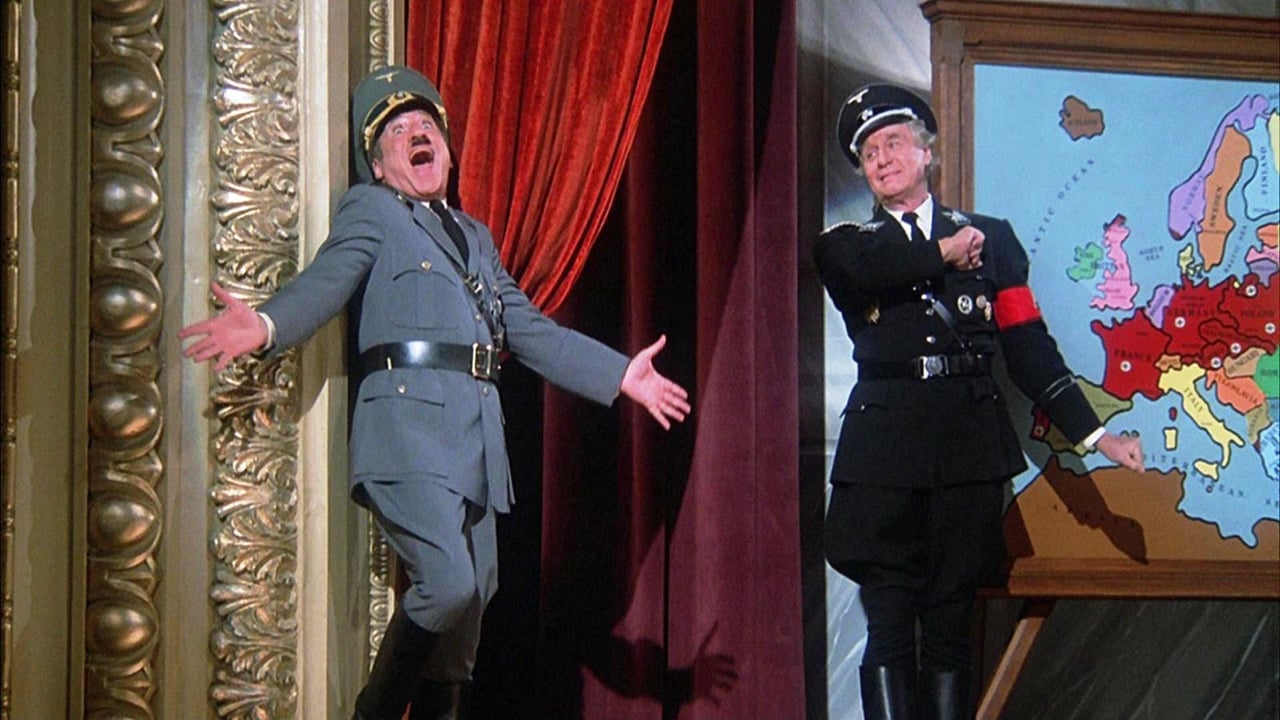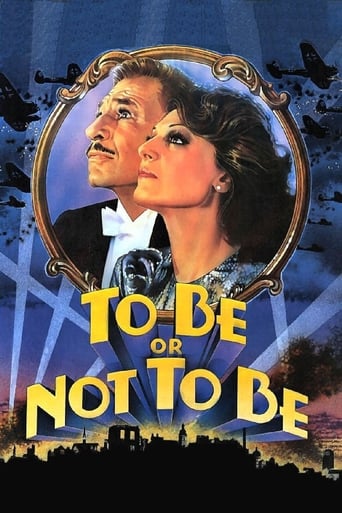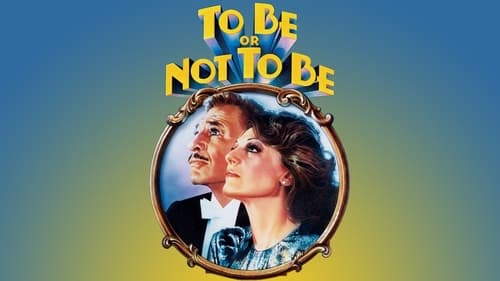



Good start, but then it gets ruined
A lot of fun.
It is interesting even when nothing much happens, which is for most of its 3-hour running time. Read full review
View MoreThis movie tries so hard to be funny, yet it falls flat every time. Just another example of recycled ideas repackaged with women in an attempt to appeal to a certain audience.
View MoreIf it was funny forty years ago, why shouldn't it be funny now. I can imagine that there's an entire sector of social space that has never seen Jack Benny and Carol Lombard in the original. ("I don't watch black-and-white movies.") And if the same sector doesn't have much of a grasp of affairs in Poland in 1940, so much the more informative.Mel Brooks leads a theatrical troupe in Warsaw in 1940 after it was occupied by the Nazis. The plot is too complex to describe in detail but involves a great deal of impersonation, switching uniforms, lambasting the Nazi hierarchy, and poking fun at egotistic actors.The plot and dialog borrow heavily from 1940 but some of the jokes have been brought up to date. I'll mention just two.The troupe is desperately seeking safety from bombs and when they enter the shelter, one actor makes the sign of the cross. The next in line, presumably Jewish, goes through some contortions over his thorax with his fingers. Now, I may be mistaken but I think this is an allusion to an old joke. An airplane in jeopardy finally makes a safe landing. A minister gets off and makes the sign of the cross, as does the priest who follows him. The Rabbi makes a sign too and when asked about it by a reporter, replies, "What sign of the cross? I was just checking -- spectacles, testicles, wallet and watch." The troupe's dresser is openly gay and he explains to Anne Bancroft that he hates having to wear a pink triangle. "It CLASHES with EVERYTHING." The acting was suitably hammy in Ernst Lubitsch's movie. Here, the performances out-Herod Herod. If you want subtlety, see the original. Charles Durning is a fine actor but may be miscast here. Anne Bancroft is beguiling, a splendid and under-rated actress with a skull and a frame sufficiently gracile to die for. I speak to you as your anthropologist. My services come with a fee -- ten cents.You should probably watch this. It's still funny after all these years.
View MoreA "9" because I am a Mel Brooks fan. The same basic story and script as the 1942 classic, but not a scene-for-scene remake, as reported by several others. Mel Brooks and Ann Bancroft reprise the roles made famous by Jack Benny and Carole Lombard. Mel Brooks plays a "Ham" of a Jewish Polish actor just barely making a living in a little theater in Poland. ("He is doing to the theater what Hitler is doing to Poland.") His wife is even more famous than him. Several good performances by many supporting actors, most notably Christopher Lloyd as "Schultz",and his commanding officer, the bumbling Col. Erhardt (Charles Durning). Based almost entirely on the comic devise of mistaken identity, Mel gets to play the three performances of his "Polish career", as a turncoat Nazi spy, Col. Erhardt, and even Adolf Hitler! There are two cute song and dance numbers, including "Sweet Georgia Brown" in Polish! In the end, the spy is shot by Ann Bancroft's "lover", and everyone flies off to England in Hitler's airplane. Several script changes from the 1942 original include: Col. Erhardt does not shoot himself, and "Hitler" (Mel Brooks) does not parachute into Scotland. Also missing here is "Hitler" (in the Jack Benny version) ordering the Nazis to jump out of the airplane without parachutes, as the plane is overweight. More plot exposition than the original, which makes it easier to follow, but not quite as funny. Be sure to see both versions to draw your own conclusions. There is a one-line "gag" with a stagehand named "Sondheim" (Ronny Graham) just so Mel can use the line "Send in the Clowns" in the movie! I love both versions of this film.
View MoreThis is a very funny movie, we had heartfelt laughs throughout. It's just great to see the Nazis sent up in style. If only Hollywood could manage it about the US Nazis of today! Yes, Anne Bancroft is a brilliant actress (and, of course, she has no breasts). She and Mel Brooks carry this picture off superbly and the whole production has such brio and good cheer that you can only give it an eight for sheer entertainment. I don't care who made an earlier picture (even if it's Ernst Lubitsch and Jack Benny in 1942) this is an original, and is definitely collectible (if the DVD ever comes out). We have been watching Euro art movies that paralyse you to the fingertips with boredom, and this picture lights up your life and gives you a kick in the pants like few others do. To hell with Euro art movies about bondage and lesbianism, let Mel Brooks reign supreme!
View MoreMel Brooks plays a bad Polish actor Dr. Frederick Bronski and Anne Bancroft plays his wife Anna.She does that also in real life.When the Nazis take over Warsaw they try to find a way to escape to England.To Be or Not to Be (1983) is a real comedy gem that hasn't got a lack of funny moments.If I mentioned them all I would be charged of overdoing.Of course you find some drama also because of the topic.I mean, there's the II Worldwar, the Nazis and the Jews.You can't make that all comedy.But I have to tell you this; if you got a Jewish master of comedy making fun of the Nazis you can't fail.It is noticed that the Jews are the best of comedians.If there was an average gentile comedian there in the lead instead of Mel this movie just wouldn't work so good.When he disguises himself as Hitler, that's just hilarious.The Führer himself was very hilarious.If only he had been only joking.That would have been a bad joke, but still.He and his fellow Nazi clowns are an easy target to make comedy of.The actors playing Nazi parts are superb here.Christopher Lloyd does an excellent job as Capt.Schultz and Charles Durning as Col Erhardt.The casting in this movie is something you have to give credit for.Mr Brooks and Mrs Bancroft make a marvelous couple in the lead.Tim Matheson is brilliant as Lt.Andre Sobinski and José Ferrer is great as Prof. Siletski.To Be or Not to Be is an eternal question that Hamlet kept asking and also the title of this film.But don't expect another version of Shakespeare's play because that's just something you're not gonna get.What you are gonna get is something much funnier.Watch this movie if you wanna die laughing.
View More